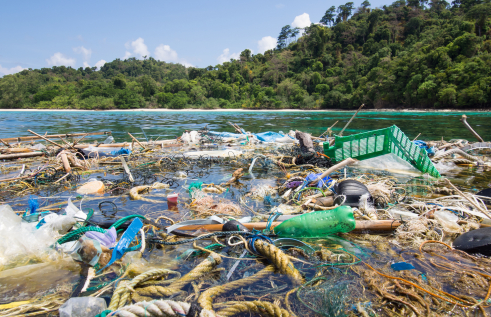Drones the latest weapon being used to combat the spike in ghost nets across NT coastline

In a bid to help clear the Gulf of Carpentaria of marine debris, Charles Darwin University (CDU) will undertake a project that will use long-distance uncrewed autonomous aircraft to identify and map the distribution of ghost nets across nearly 958 km of NT coastline.
Ghost nets are abandoned, lost or discarded fishing nets, often many 100’s of meters in length that can drift significant distances across the ocean. Due to ocean currents they congregate in large densities in the Gulf of Carpentaria.
The nets cause injury or death to marine species that may become entangled in them.
CDU’s project, which has received funding of almost $400,000 from the Australian Government as part of the Ghost Nets Innovative Solutions Grants, will use drones and artificial intelligence software routines to identify and quantify the volume of marine debris from remote and difficult to access coastlines.
Leading the project will be CDU’s North Australia Centre for Autonomous Systems (NACAS) with Director Professor Hamish Campbell saying the project will provide immediate environmental benefits across the Gulf of Carpentaria.
“Ghost nets are a significant threat to marine wildlife and coastal bushtucker. A major challenge for ghost-net removal is that nets come ashore along vast tracts of Northern Territory coastline, which are tended to by small communities with limited resources,” Professor Campbell said.
“Consequently, ghost nets are not generally detected and retrieved for prolonged periods, if at all which increases their impact upon wildlife and raising the chances of them being re-floated and deposited elsewhere.”
“This project will provide regularly updated and highly accurate information to ground crews which will help to better strategize recovery operations. This will enable them to collect more nets for the effort and costs involved, reducing the volume of nets within the ocean, and lessening their impact upon marine biodiversity.”
Artificial intelligence (AI) software will be used to develop coastal aerial imagery with NACAS partnering with CDU’s Northern Territory Academic Centre for Cybersecurity and Innovation (ACCI) on this component. ACCI is led by Director, Professor Mamoun Alazab.
As part of the outputs of the project, abundance distribution maps illustrating the ghost-net location and size will be created and provided to the Anindilyakwa Land & Sea Rangers to assist with ghost net retrieval operations.
CDU’s Deputy Vice-Chancellor, Research and Innovation Professor Steve Rogers said this project is a prime example of CDU’s various research centres working together to make a difference.
“At CDU our researchers are deeply connected across all disciplines and this project shows how our different centres can come together for the betterment of the Northern Territory,” Professor Rogers said.